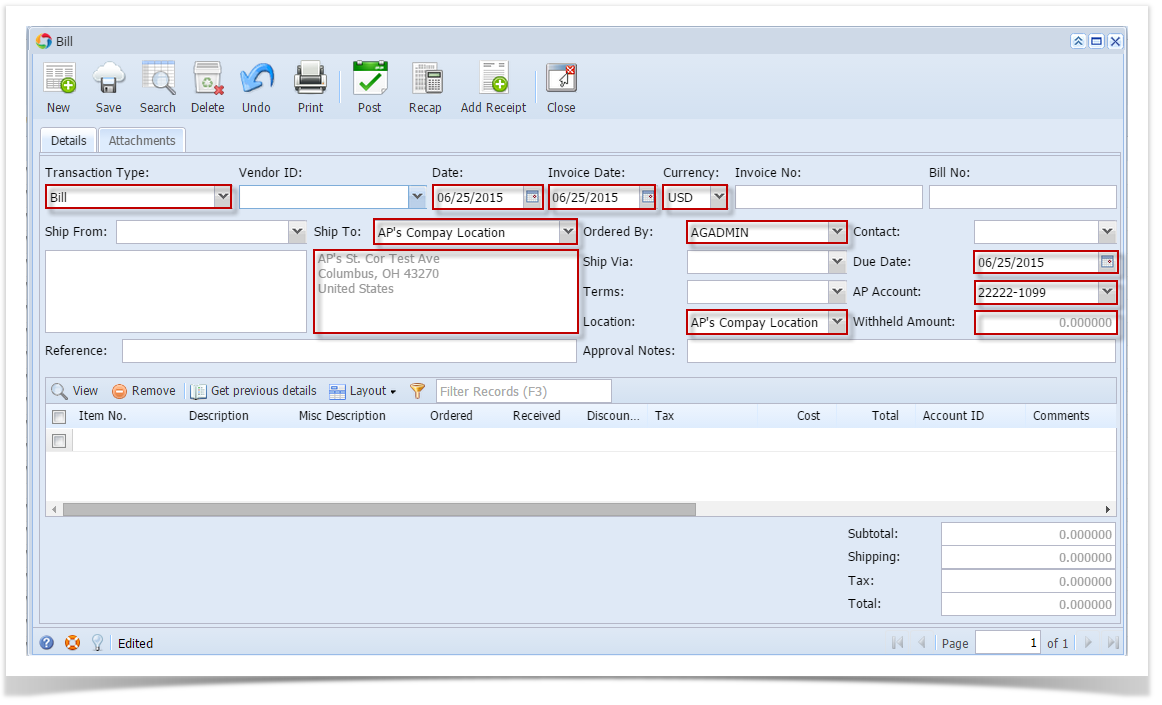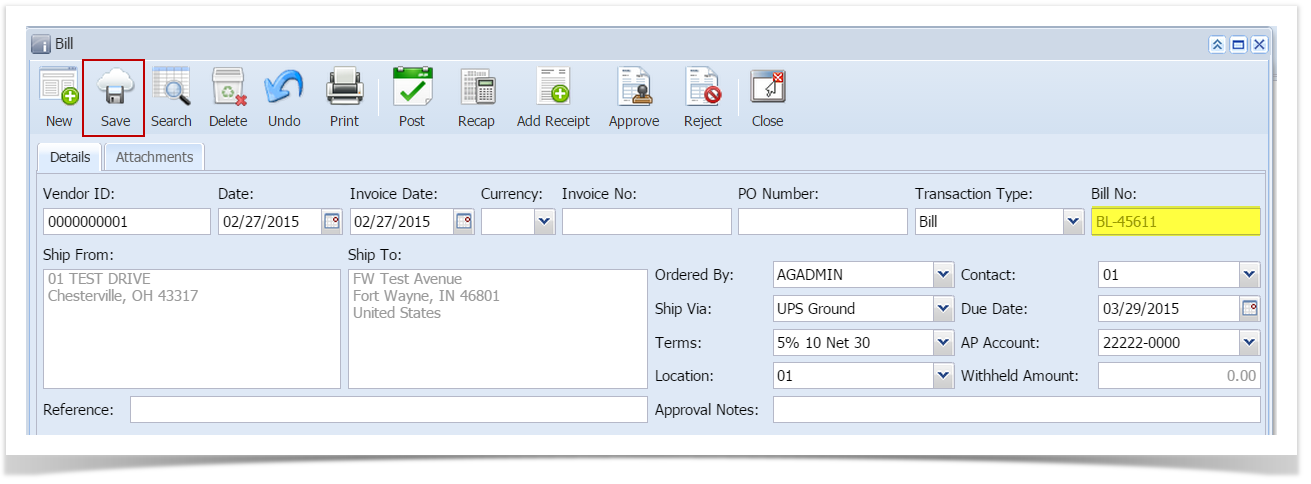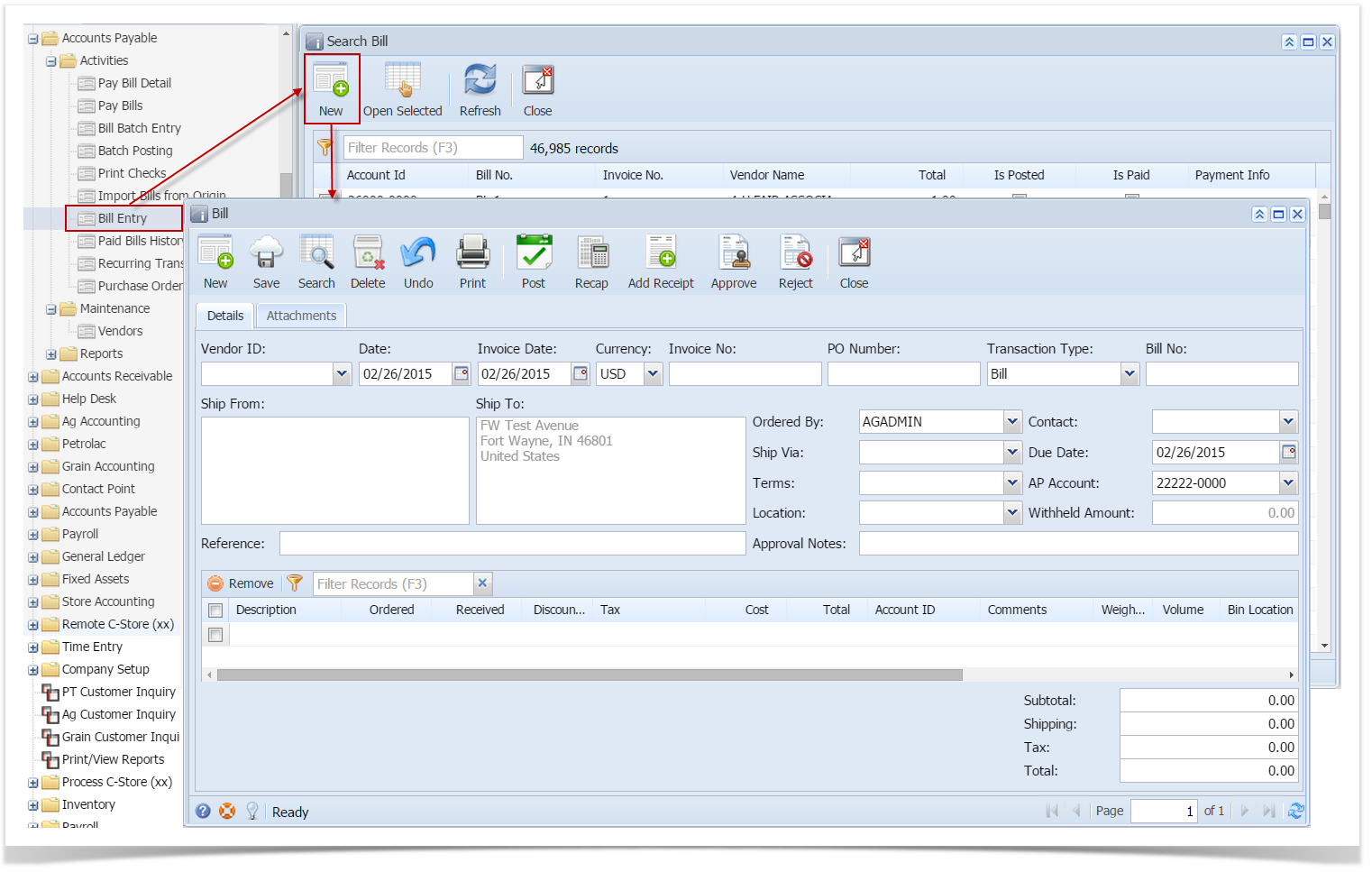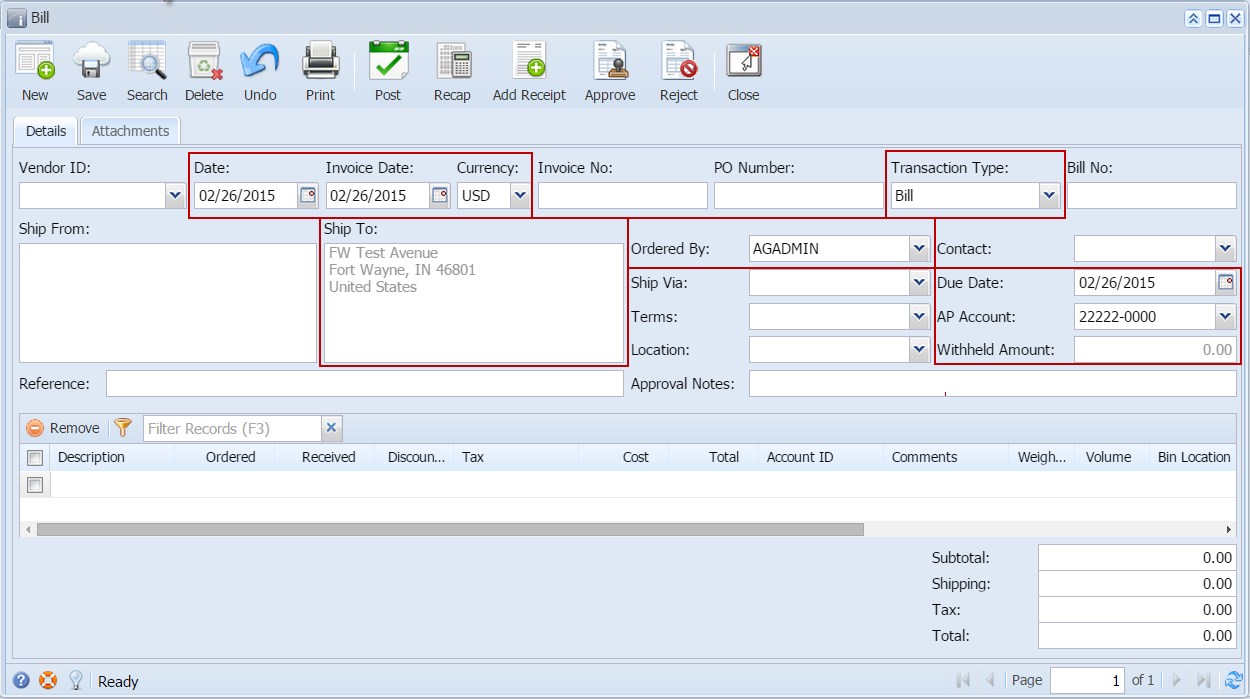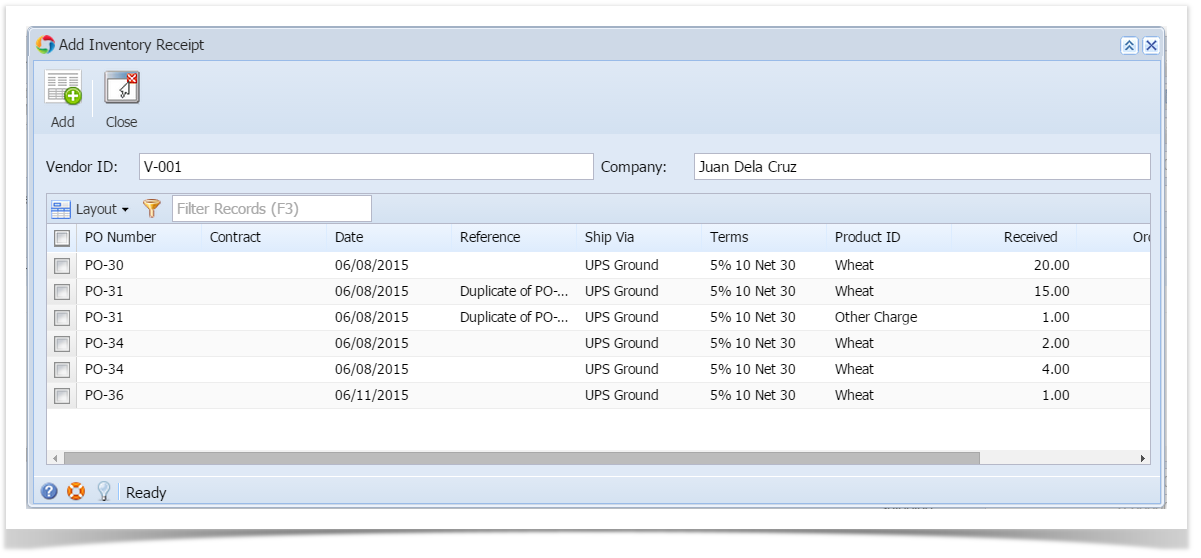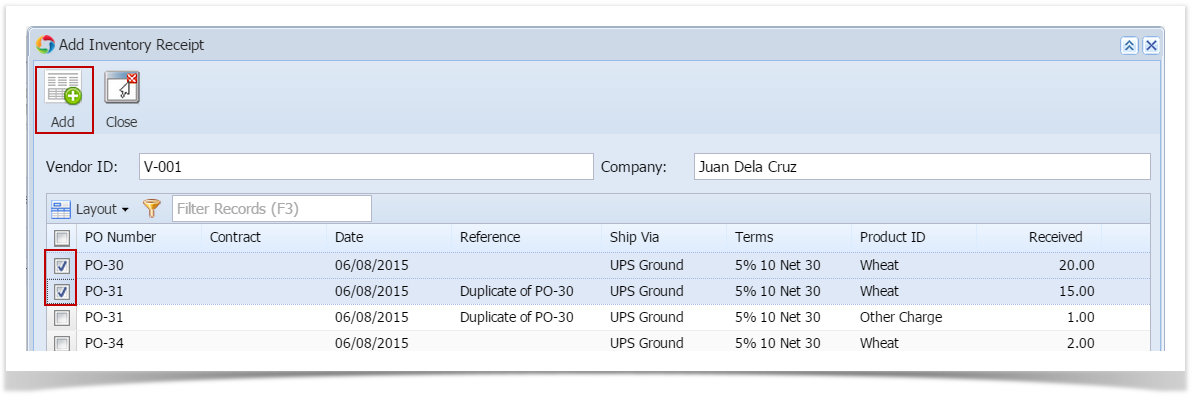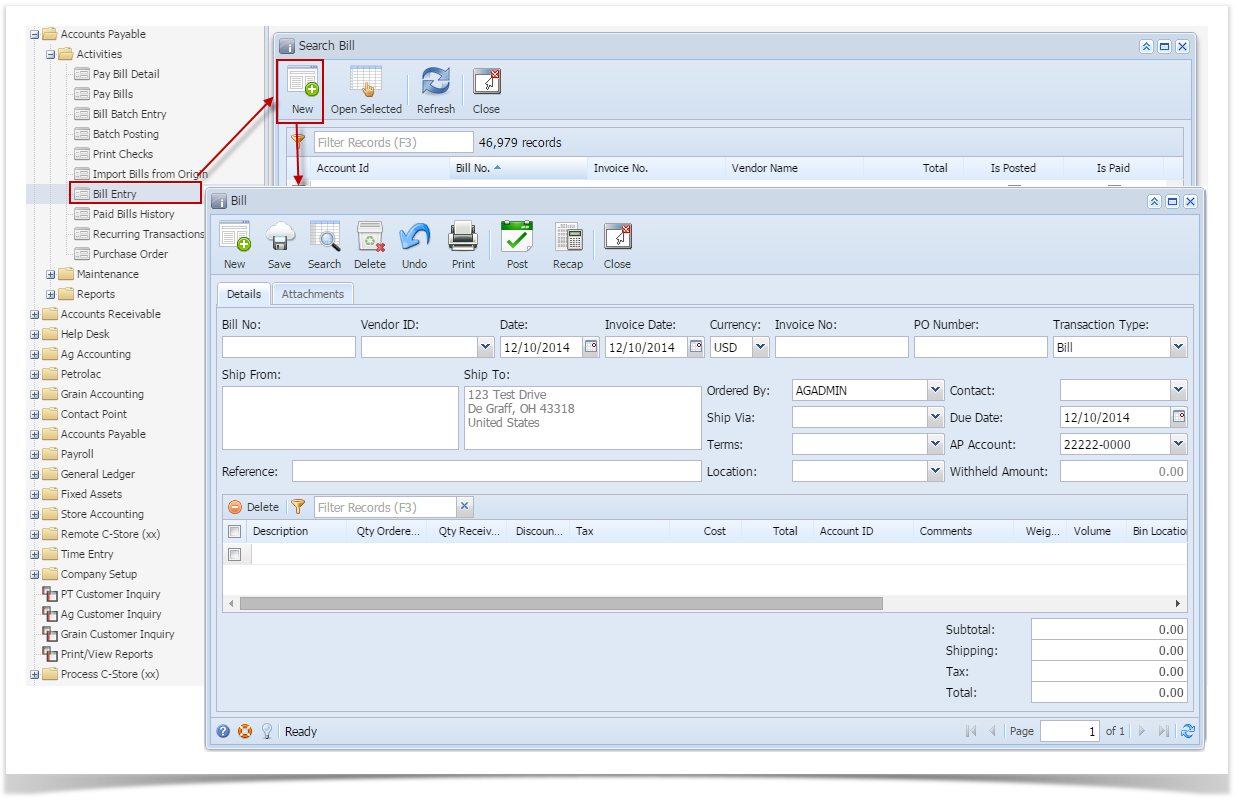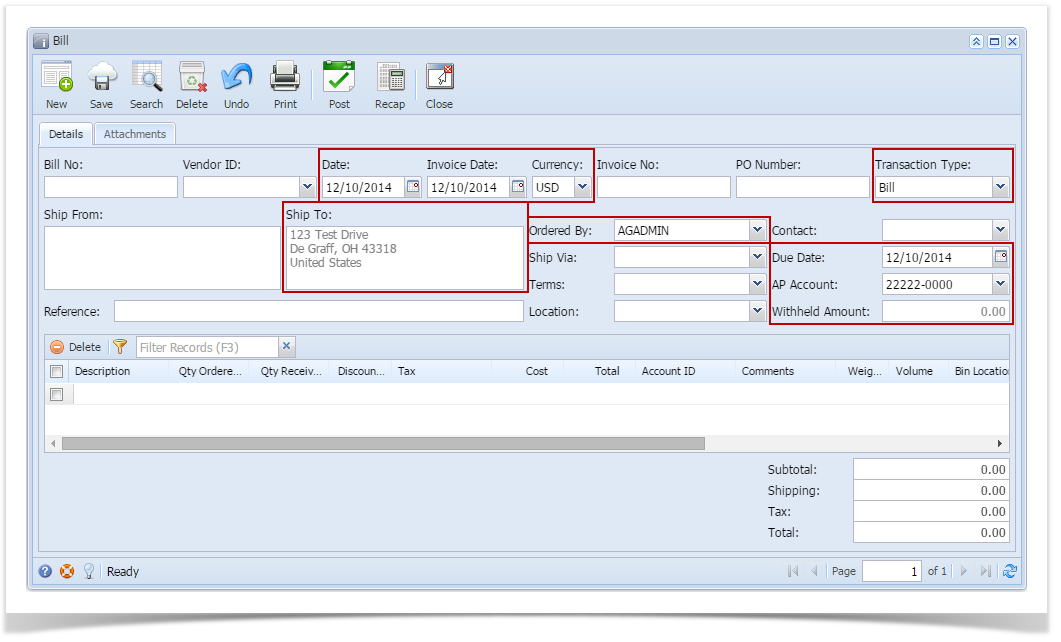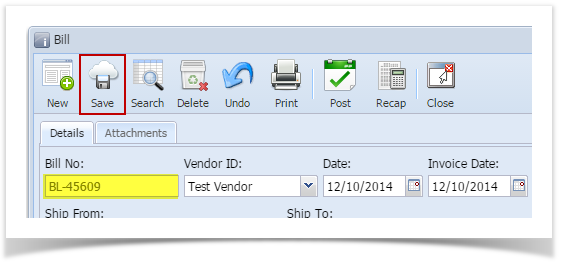Page History
...
- From the Main Menu, click Purchasing > Bills . If there's an existing record, docked Search Bill screen will open. Otherwise, blank Bill screen will open automatically.
- If Search Bill screen opens, click New toolbar button to open blank Bill screen.
- The following fields were automatically populated once you open a new Bill Entry screen:
- Transaction Type - will default to Bill
- Date - will default to today's date
- Invoice Date - will default to today's date
- Currency - will default to the currency set in Company Preference > Settings screen
- Ship To - will show the address name and address of the default Company Location.
- Ordered By - will default to the user that is currently logged in
- Due Date - will default to today's date
- AP Account - will default to the AP Account set in Company Preference > Accounts Payable screen
- Location - will show the address name and address of the default Company Location.
Withheld Amount - will default to 0.00
Note For combo box fields, selecting different value is allowed if necessary.
- Click Vendor ID combo box button and select existing Vendor from the combo box list. Name of the selected vendor will be displayed on the Vendor Name field.
- If selected vendor has an existing Inventory Receipt, Add Inventory Receipt screen will open.
- Select the item/s you want to add on your bill and click Add button.
- Selected item/s will be displayed on the grid together with the other details set in the Inventory Item screen.
- If selected vendor has an existing Inventory Receipt, Add Inventory Receipt screen will open.
- After selecting Vendor: Ship From, Contact, Ship Via, Terms and Contact fields will be automatically populated by the details entered in Vendor screen.
- Due Date field will update based on the terms assigned for the selected vendor and on the Invoice Date selected.
- Enter Reference if necessary.
Except for the items added via Add Inventory Receipt screen, you can still add details on the grid.
Expand title Adding misc items that is not existing in the Inventory Items table - Enter Misc Description.
- Enter quantity in Qty Received column. Any quantity entered in this field will also be displayed in Qty Ordered column.
- Enter discount if necessary.
- Enter amount in Cost column. This will update the Total column to Cost * Qty Received.
- Account ID column will be automatically populated by the Expense ID account set in Vendor screen.
- Enter comments, weight and volume if necessary.
Expand title Adding misc items that is existing in the Inventory Items table - Click Item No combo box button.
- Inventory Items with Services, Non-Inventory, Other Charges and Software type will be displayed on the combo box list. Select the items you want to add.
- Selected item/s will be displayed on the grid.
- Ordered and Received quantity will default to 1. Change if necessary.
- Cost will default to the cost entered in Inventory Item screen. Total column will display Cost * Qty Received.
- Account ID column will be automatically populated by the account Id set in Vendor Entity screen.
- Enter comments, weight and volume if necessary.
- At the bottom of the screen is the Subtotal field that displays the total before sales tax of all the line items entered in the grid.
- The Shipping field can be used to enter shipping costs for the transaction.
- The Tax field will display the calculated tax for the Tax Code entered in the grid.
- The Total field will display the added amount of the Subtotal, Freight and Tax fields. This is the amount that will be entered to the Accounts Payable account in the General Ledger when you post this transaction. You will also see this amount in the Payables form for this vendor.
- Click Save button. Bill No field will now be filled in with a unique, system-generated ID automatically.
| Note |
|---|
| Expand | ||
|---|---|---|
| ||
Here are the steps on how to create Bill Entry:
|
|
|
|
|
|
|
|
|
|
|
|
|
|
|
|
|
|
|
|
|
|
|
|
|
|
|
|
|
| Expand | ||||
|---|---|---|---|---|
| ||||
Here are the steps on how to create Bill Entry:
|

